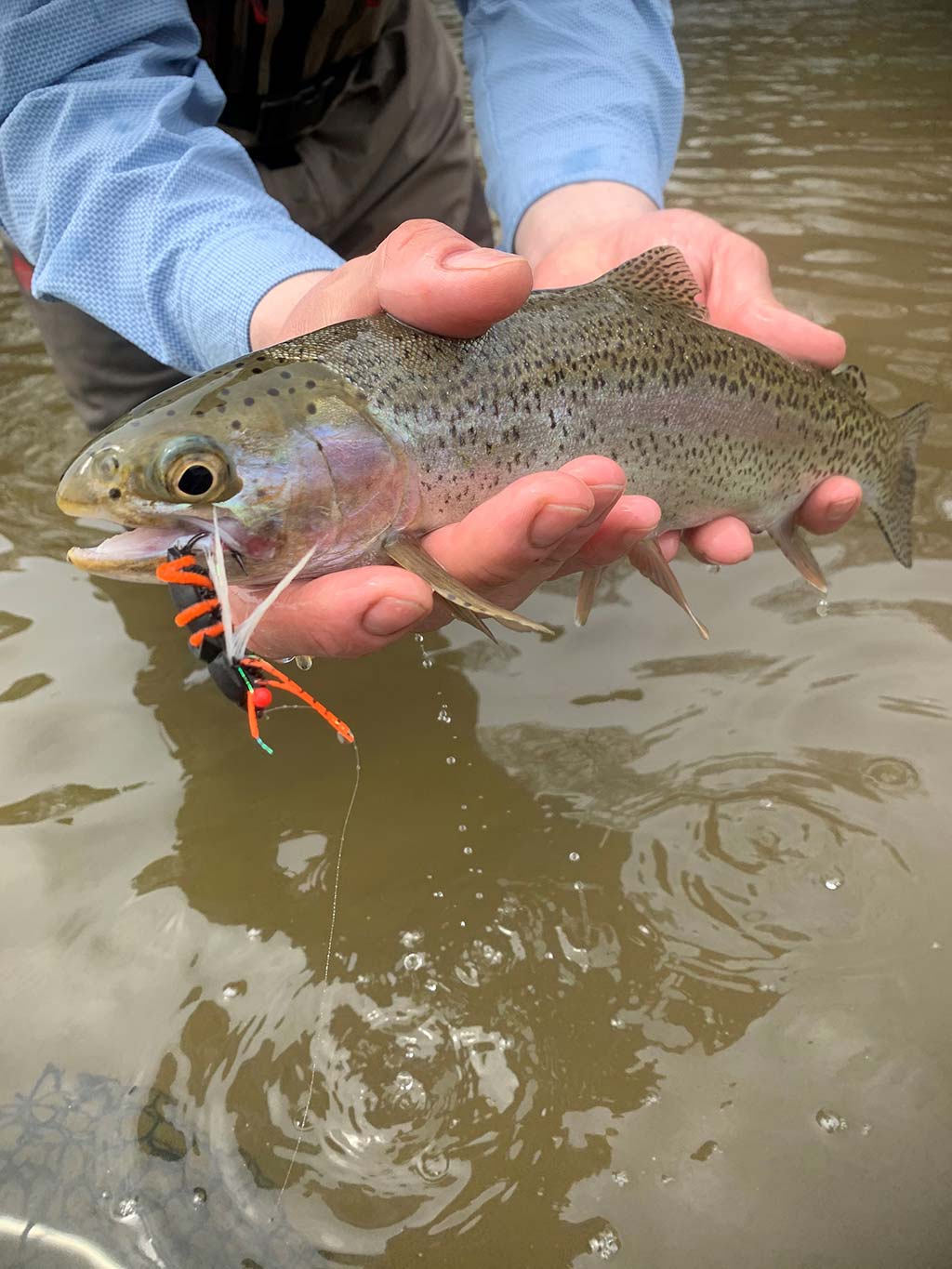
When the world gives you bugs, turn them into flies!
The stage is set and the excitement is growing as we await the emergence of the periodical cicadas. These cicadas are part of a group called Brood X or the Great Eastern Brood, the most widespread and prolific of the cicada generations. They inhabit a geographical range spanning from Tennessee all the way up through New York.
Cicadas live underground for the majority of their lives tunneling around and chowing on sap from roots as they slowly mature into their adult forms. After 13 to 17 years, depending on the species or brood, the soil warms and they start tunneling out of the ground and begin chattering about for one sole purpose, to find a suitable mate!
This does beg the question of why we see and hear cicadas almost every year. Well this is because they don’t all emerge at once. Cicadas are grouped into 15 different broods, 12 broods of 17-year cicadas and three broods of 13-year cicadas. Each brood emerges in a different year and there are some species that emerge yearly; so here in the tristate area we rarely spend a summer without them chattering away in the trees.
The Brood X that is set to emerge this season is not your typical green-bodied, black-eyed annual cicada. They are straight out of a horror film. The Brood X sports six long legs, a black body, two large wings with orange veins and two, bright red, beady eyeballs. They also have antennae which adds to their creep factor. But except for flying into cars, littering trees, and making quite a noise, cicadas are completely harmless.
For anglers, the billions of cicadas emerging sets up an opportunity to catch just about every species of fish on big top water flies. And this is no measly size 20 blue winged olive; this is a size 6 dry fly that trout and other species will not miss the opportunity to devour and neither should you!
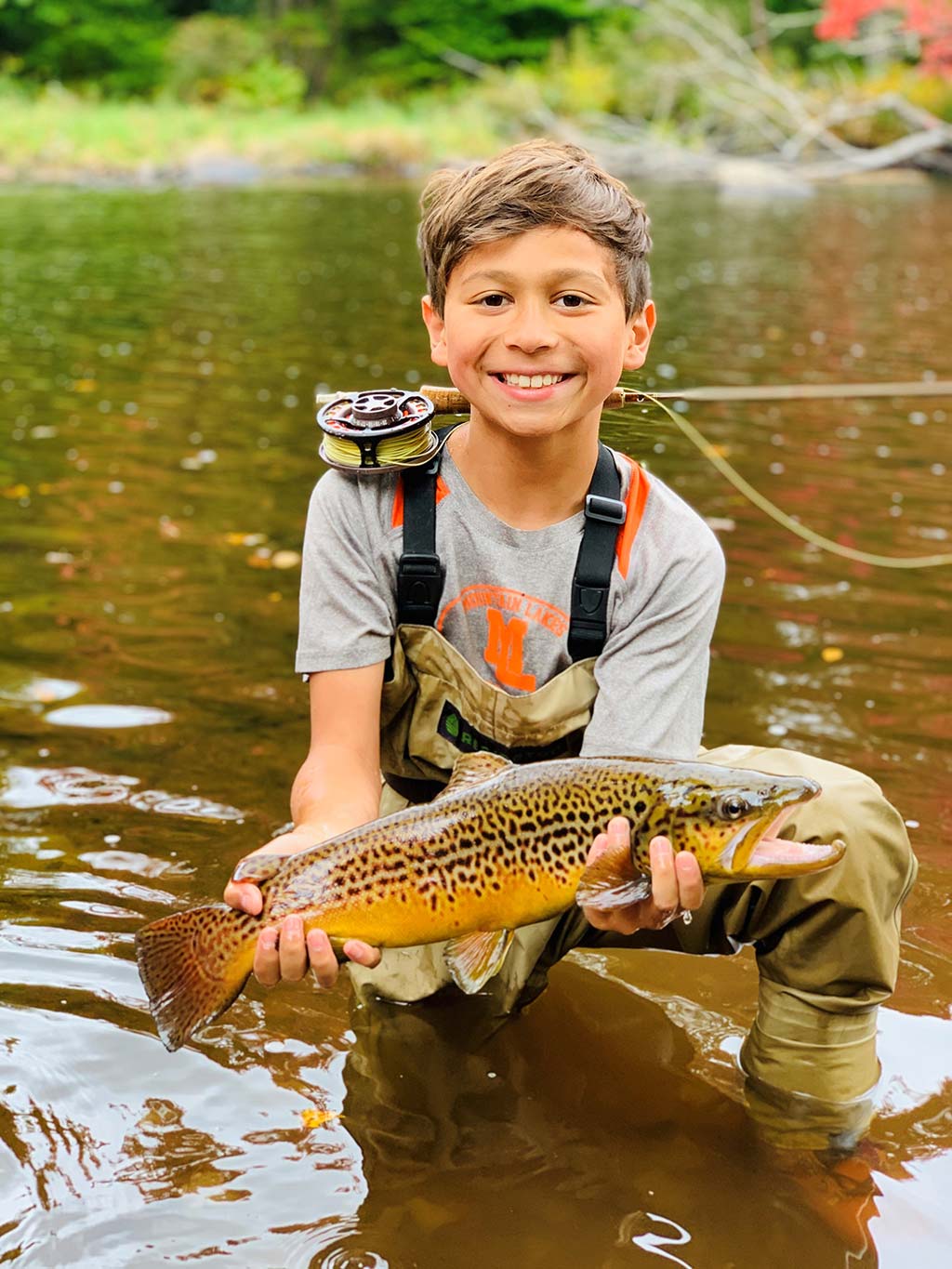
Curse Of The Lanternfly
Unfortunately, not all bugs that will show up in 2021 come with the annotation of just being a pest. One bug in particular beginning to spread into all of New Jersey that comes an omen of death and destruction to all that it inhabits, and that’s the spotted lanternfly. The first identification of the spotted lanternfly occurred not too far from our beloved state of New Jersey when it was first identified in Berks County, PA in 2014. Shortly afterwards, more than a dozen counties were quarantined to try to control its spread.
At this point, the lanternfly has spread to New Jersey, New York, Maryland, Connecticut, Delaware, and Virginia. A recent article from the NJ Patch (NJ: Stop Dangerously Invasive Lanternfly Spread in 8 NJ Counties) highlighted eight counties that have detected the lanternfly and some which are under quarantine (Camden, Cape May, Gloucester, Hunterdon, Mercer, Burlington, Salem, Somerset, and Warren). The quarantine requires businesses and residents that are moving specific items from one location to another to inspect their cargo for hitchhiking lanternflies or unhatched egg masses.
The spotted lanternfly also has a rather unique life cycle that will sound familiar to any fly fisherman. It begins as a barely visible egg mass that resembles pale-green lichen found on trees and tombstones, making them quite hard to identify. These egg masses have been found on surfaces like stone, firewood, cars, and even Christmas trees transported throughout the state. This is one of the ways the lanternfly is quickly able to invade a multitude of areas.
Eggs begin hatching in late April and the bug proceeds through four, immature, nymph stages called instars; it gets progressively larger at each stage. In these immature stages, the bug itself is wingless but they are still very capable of hopping about. The first, second and third instars occurring from April through July all produce a black and white spotted bug. In the fourth stage, a red body emerges with both white and black spots. Finally, the adults begin to appear. These monster flies sport a black head and gray-brown forewings with black spots.
While they don’t actually produce light, their name comes from the two crimson-red hindwings that lie underneath the forewings, producing a “lantern-like” effect, hence its name. If the bug itself was rare, it might be adorned for its ornamentation, but because of its aggressive ability to reproduce it is more of a curse than a marvel.
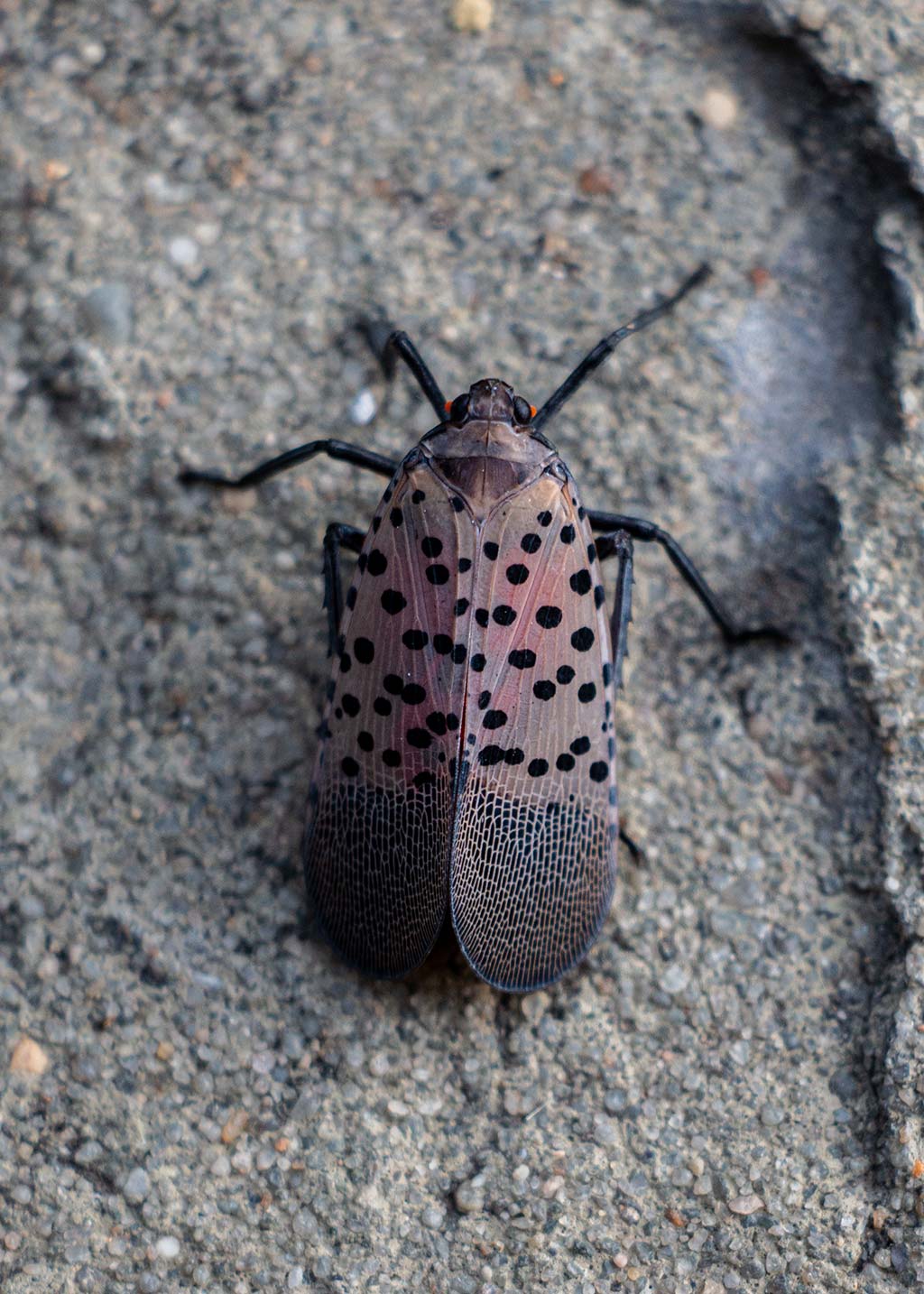
Match The Hatches
The major difference between these lanternflies and the cicadas that will emerge this year is two-fold; first, they appear every year in greater and greater numbers, and secondly, they suck the life out of every plant they land on. In Asia, their preferred host is a plant misnamed as the tree of heaven, which has toxic properties and are invasive to North America. But the lanternflies have learned to adapt to suck the sap out of many woody and non-woody plants, weakening them to the point of destruction.
Anyone that has been around lanternflies knows what happens next. They rain a clear, sticky, sugary waste – referred to as honeydew – onto any surface they come in contact with. Within a few days, the nutritious honeydrew fosters the growth of a black fungus called sooty mold. In terms of ecological effect, most people find this residue a simple annoyance as it discolors siding, patio furniture, and more. But it is a death sentence for the plants, halting photosynthesis. They have begun to decimate vineyards, fruit bearing trees, and precious trees needed to make lumber.
But again, we return to how to put a positive spin on this terrible situation. And just like cicadas, why would a fish pass up a tasty morsel if it happens to fall into a watershed. We have seen phenomena like this before, where fish quickly begin to zero in on a new prey that becomes prevalent in one area, such as the prolific spruce moth populations in the Rockies, or Japanese beetles here in the east.
Although they have two large wings, they are terrible flyers, similar to stoneflies, crash landing and getting pushed by the wind even in a slight breeze. It’s no surprise they end up in water so frequently and that fish begin to munch. When I first saw a trout eat a lanternfly, I was flabbergasted. I immediately dug into my fly box for the largest dry fly I could find. I tied on a cicada pattern that I had acquired many years ago from a previous periodical hatch and upon splashing down in the water, it was met with a ferocious attack that nearly ripped my fly rod out of my hand. Since then I have caught nearly every species on a lanternfly pattern!
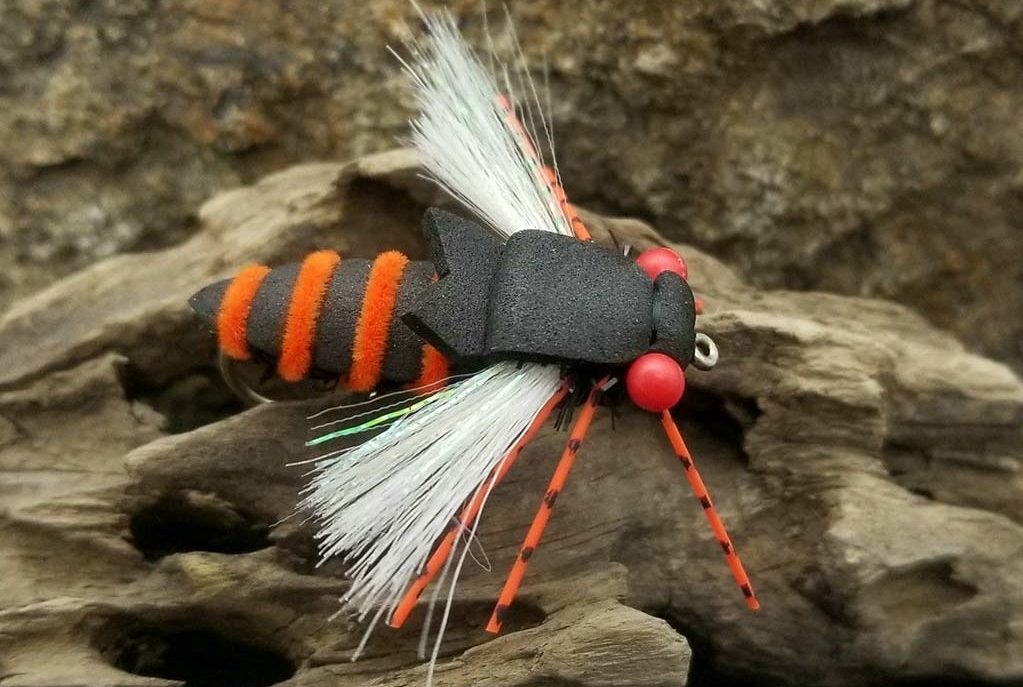 |
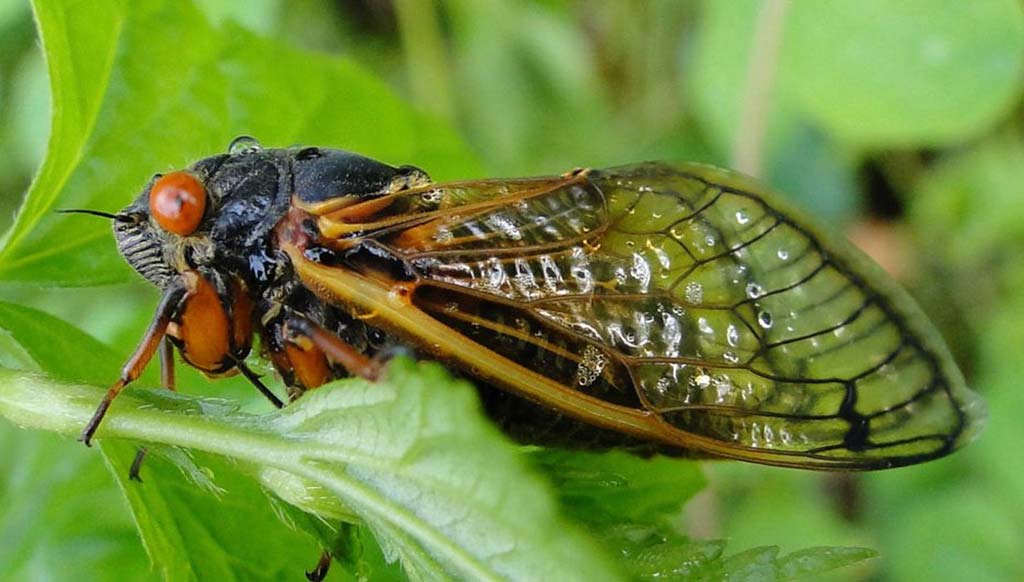 |
| A cicada fly on driftwood tied by Steve Yewchuck, with the real thing in the leaves (courtesy of NC State University). | |
While I don’t think matching the hatch is all that important in these scenarios, having a fly that specifically resembles a cicada or a lanternfly depending on what is flying about can’t hurt your odds. For both patterns, anything with a large foam body should suffice. If you want to get more specific, you can add red eyes and some red/orange thread throughout the body just as my friend Steve Yewchuck of Envision Fly Works simply ties up. Sure, you could get more sophisticated and precise but these will produce just fine.
For lanternflies, my good friend Jayson Mumma starts with some JS Realistic Nymph legs to give some legs to his foam body followed by red hen saddle hackle to give off the lantern effect. I’ve used Chubby Chernobyls before in the past as well with great success. Don’t think that just because you aren’t exactly matching the hatch you can’t catch; the key is to get it close enough!
The best part about fishing with lanternfly and cicada patterns is the fact that both of these species are subpar flyers that they have substantial mass to them! Windy days are the best times to fish these patterns as the flies are blown from the air and trees splashing down in the water. What this means as far as presentation goes, unlike normal dry flies where subtly comes into play, there isn’t much you can do wrong. I normally try to splat these flies down as loudly as possible.
However, there are some situations where this may not work so well. Low, clear water, this technique may do more harm than good. My suggestion is to start quietly with a natural drift, add some twitching next, and then ramp up to chaotic splash casting to draw some attention before moving onto the next spot.
While cicadas (and lanternflies) present a perfect opportunity to catch all species on the fly, don’t think you are restricted to using fly gear. Savage Gear makes an incredibly realistic 3D cicada that crawls across the surface sending out seductive vibrations imitating a real bug in distress. They make it in the normal annual cicada color (green/brown) and the Brood X color (black body and red eyes) depending on your hatch. – B. Norgard
These flies are hefty so leave the small weight rods at home. I tend to use a similar setup to my freshwater bass or steelhead setups. A 9-foot, 7-8 weight rod with fast action will work wonders. Pair this with a line made for throwing large flies with a large taper such as Cortland Streamer series.
As I said, you are not finesse fishing here so you want to use a heavy 9-foot leader to be able to turn over these large flies and finish with a tapered down tippet of about 1X or 2X.




